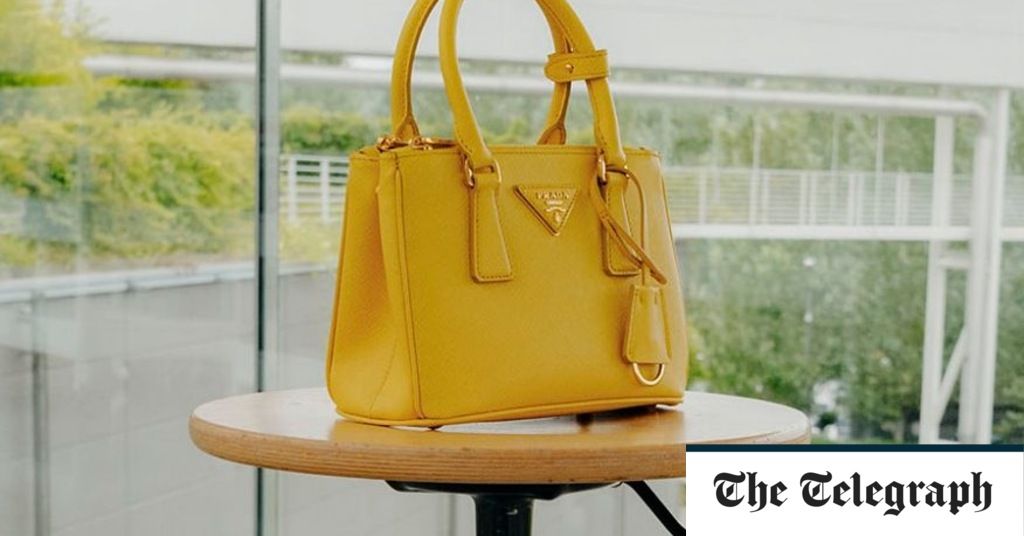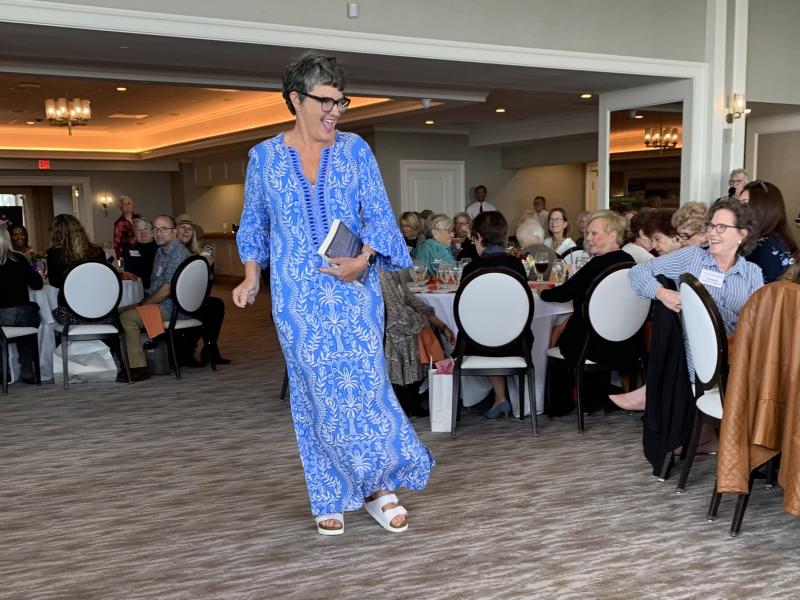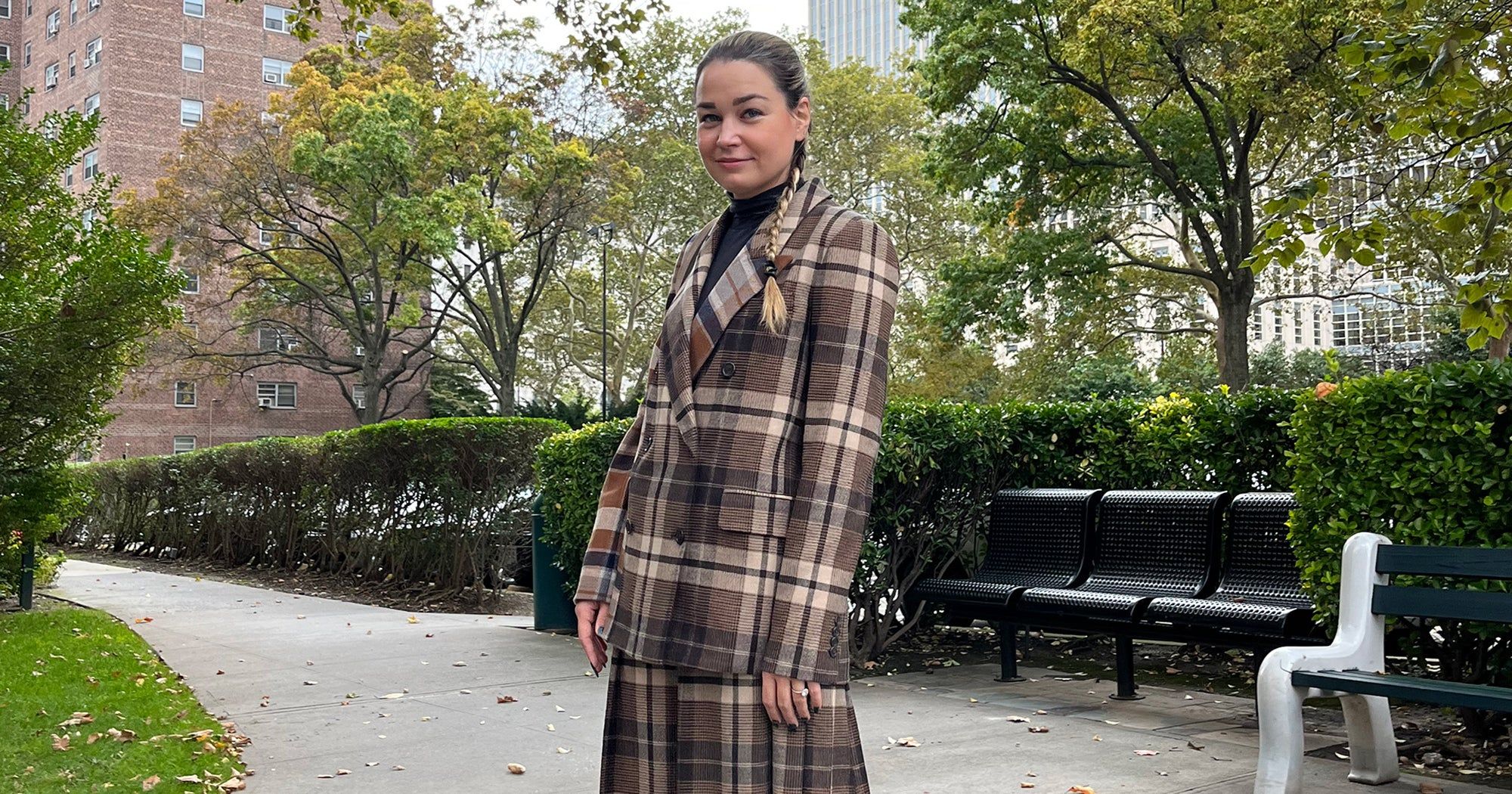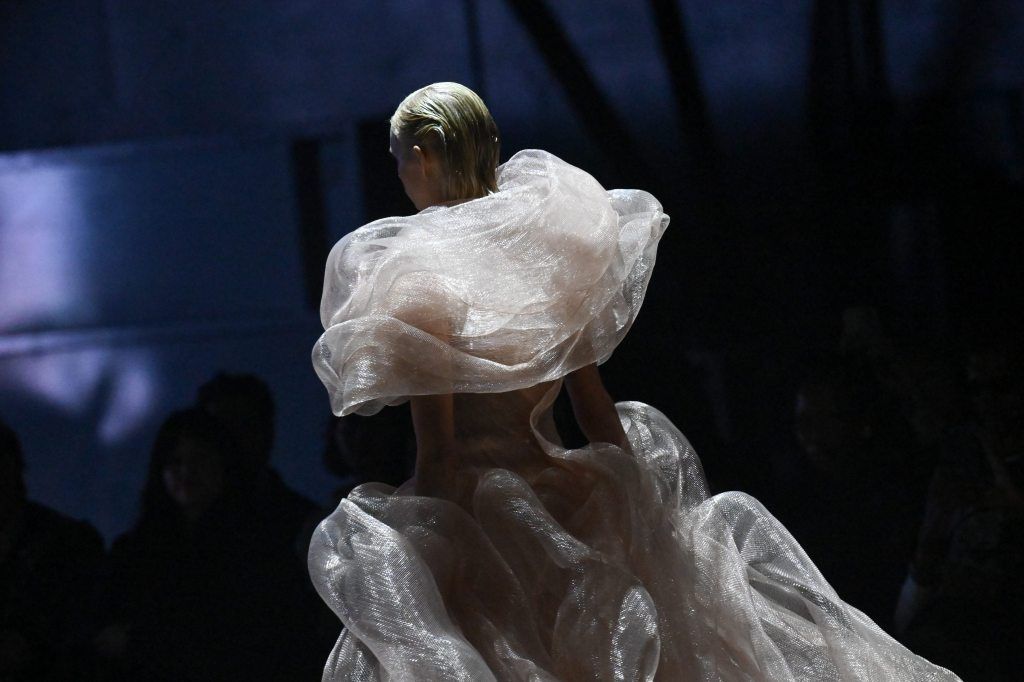On the hottest day of the year, on the outskirts of Florence, I find myself in a speeding car navigating chaotic morning rush-hour traffic and feeling distinctly feverish.
It’s not only because the temperature is approaching record highs and the radio is blaring out the Italian government’s extreme weather guidance (no outdoor exercise, no sunbathing, no alcohol). Rather, I’m keyed up with the natural excitement that comes from a peek into the inner workings of Prada’s industrial HQ.
Such are the top-secret operations that very few people get to visit the superbrand’s HQ at all. It is here that Prada Group’s leather-goods collections are developed; the complex also houses its raw materials, its archives and the data processing centre, and is among the sites where the Prada Group Academy takes place. In all, 800 people work here. And the building is as impressive as its operations.
The site, 47km south of Florence, is impossible to miss, dominating the skyline with white wings stretching out towards the Valvigna valley. Not only its sheer scale but also the imagination behind it take a moment to sink in: it’s all floor-to-ceiling glass walls, bountiful hanging gardens and a light-flooded atrium.

The impressive site was formerly an abandoned tile factory that the Prada Group reclaimed in the 1990s
Credit: Christoph Haiderer
The site was conceived back in the 1990s, when the Group wanted to take its industrial headquarters in-house, and seized the opportunity to redevelop an abandoned tile factory and restore the surrounding nature. ‘Those concepts are quite usual now, but 30 years ago it was new,’ I am told by my guide.
With award-winning architect Guido Canali on board, the site was completed in 2015. It is rich in Canali signatures such as the lavish use of glass in the 30,000sq m interior. One of Prada’s ‘garden factories’, it is surrounded by another 30,000sq m of plants and trees. The result is a futuristic oasis that wouldn’t be out of place on a Ridley Scott set.

The complex also houses Prada Group’s raw materials, its archives and the data processing centre
Credit: Christoph Haiderer
As well as absorbing an estimated 40 tons of carbon dioxide annually, the greenery is a ‘key part of the whole project that contributes to a sense of wellness for all who work here’, I am told. In July 2016, the design won the National Council of Architects’ Brand & Landscape Award, which congratulated the project on its ‘expression of great respect for nature, which is safeguarded and preserved, as well as for work, to which dignity and value are attributed.’
As we make our way past electric cars charging at their ports (the Prada fleet is transitioning towards green power), we see a garden of fig trees and grapevines that are harvested, with fruits then on offer in the canteen. Carpets of lavender buzz with bees.
It is here that the next cult Prada handbag, shoe or boot is dreamt up, developed and tested before going on to set the fashion agenda. The ambition they all have in common? To achieve the status of Prada’s most definitive handbag to date, the Galleria.

Prada’s Galleria bag was first designed in 2007
Credit: Christoph Haiderer
As a rule, Prada refrains from using the term ‘icon’ in reference to the Galleria bag, preferring ‘neo-classic’, ‘a hallmark of Prada’s 21st-century identity’, and ‘a future heirloom in the making’– yet it is iconic, make no mistake.
First designed in 2007, it was named after the brand’s original flagship in Galleria Vittorio Emanuele II in Milan. It is the one constant in every womenswear collection that Prada produces, encapsulating the sweet spot between strength and seduction for which the brand is beloved.
The craftsmanship needed to make the Galleria takes at least five years to master. Technical director Samuele Checchi confirms it is the most complex bag Prada’s artisans produce, made up of 100 different components and taking one full day to make. And here, in this hive of secret activity, I’m getting to see how it’s all done.
Checchi, who has overseen Prada’s pattern making, prototyping and sampling for two decades, introduces us to Elena, who has prepared a two-dimensional digital pattern of the Galleria, followed by Diego who is assembling it. ‘We’ve been doing the Galleria for 25 years now,’ says Checchi, ‘but we are constantly reinterpreting it, adding new colours and details, trying different materials and prints, testing the handles, how we can make them stronger. It’s a constant process.’ He points out a prototype he’s not happy with: ‘There is too much leather here, and here it must be straight.’

‘It is here that the next cult Prada handbag, shoe or boot is dreamt up, developed and tested before going on to set the fashion agenda’
Credit: Christoph Haiderer
Such exacting standards come from the top down, he says. Miuccia Prada – always referred to as Mrs Prada – and her husband, Patrizio Bertelli, chairman of the Group, have eyes on the product even at this elementary stage. ‘Mr Bertelli is very focused on leather goods and he wants our pattern makers to do this manually because you cannot have this sort of sensitivity with a computer.’ Every single prototype is sent their way for approval. ‘Mr Bertelli oversees everything from the very first mock-up to the finished sample,’ says Checchi, smiling. ‘Tutto, always.’
I am witnessing the first of nine stages. Checchi notes that, unusually for a factory like this, each artisan is expert in every stage of the process rather than in one specialism.
Prada’s signature cross-hatched saffiano leather is used to make the Galleria. Checchi points out the parts of the hide that must be used to maintain a consistent thickness. Near the edge is too thin, in the middle is just right. No imperfections are tolerated, he says. ‘We need to use as much of the leather as possible, of course, but this is a luxury bag that must last, so we cannot accept this, for example…’ He holds up a piece that has a minuscule scratch. Massimo Vian, who joined as industrial director in 2020, says a company in north-east Italy turns these off-cuts into fertiliser.

Here, Miuccia Prada is always referred to as ‘Mrs Prada’
Credit: Christoph Haiderer
It’s with such sustainability in mind that the business also acquired a 43 per cent stake in the Tuscan Superior tannery last year, which supplies its saffiano leather. ‘We wanted to control the full supply chain,’ says Vian. ‘There are some scientific secrets that reside with that tannery, and now we are very involved in its management.’
Back on the factory floor, Checchi is stressing that high standards are crucial in every element of the bag’s manufacture. ‘Everything, even the bits you can’t see, has to be perfect,’ he says. ‘Otherwise when you get to the assembly stage it won’t come together.’ That’s where the paper prototype comes in, he says, holding one up with a smile. ‘This is like the legend of the bag,’ he says. ‘The more that you produce a bag, the more you add information on the technical specifications, about updates and resolving issues.’

The intricate prototyping process involves digital pattern making before the separate components of the Galleria are precision-cut and assembled
Credit: Christoph Haiderer
After the making of the hand-stitched cord handle, comes the intricate process of assembly and the addition of the zip, feet and logo. Up until six months ago, this hardware was made of brass with a galvanic treatment; now it’s stainless steel with a PVD coating.
‘It’s a much higher cost, but for sustainability and performance reasons, we walked away from galvanic treatment,’ explains Vian. ‘In terms of durability, with this stainless steel component and surface treatment, I think it could last for up to five generations.’
Next, the lining is hand-stitched inside, while the milling and painting of the raw edges finishes things off. While some competitors use a thick primer to reduce the number of layers of paint, at Prada they take their time. ‘The thicker primer didn’t pass our quality tests because we noticed that it tends to peel off,’ says Checchi, clearly delighting in these levels of meticulousness. ‘Our process is lengthy to achieve a higher quality.’
And there it is, the finished Galleria. Holding in my hand one I’ve just seen completed, it feels somehow more precious than the one I handled in the Florence flagship the night before, purely in the name of research, of course. ‘Excellence is everything, everything,’ says Vian. ‘In every detail we have the ambition to excel and be the first, because we have great competitors. We like to think we’re the best, but at the same time we’re always striving for that next level.’
It’s this passion that makes the Galleria, and the fashion oasis where it’s created, so feverishly exciting.




